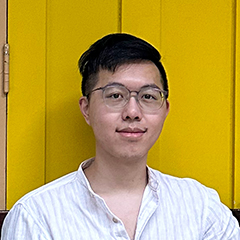Effective Prompts for Interior Design: A Guide to Accurate Control
- Date
 Shaun Mak
Shaun Mak@sunflowerm
Interior design renders are costly and time consuming. From ideation to execution, the process can take between hours to weeks to weeks depending on complexity. With Spacejot, you can visualise your design ideas in a fraction of the time it would take you to do it manually. But if specific control is required, custom prompting is necessary to bring the picture in your head into reality.
In this article, we will explore the basic structure of prompts and typical pitfalls to avoid.
Table of Contents
- Introduction
- Understanding the Structure of a Prompt
- Common Mistakes in Prompting
- Bonus Tip: Using ChatGPT to Generate Prompts
- Frequently Asked Questions
Introduction
The key to leveraging Stable Diffusion effectively lies in creating detailed and structured prompts. A well-crafted prompt includes several components, each contributing to the overall accuracy and quality of the generated image.
Understanding the Structure of a Prompt
A prompt should typically follow the structure below:
[view] of [room], [style], [materials], [colours], [objects], [qualities], [...]
Example:
beautiful interior photography of minimalist achromatic living room with a sleek achromatic color scheme, concrete-effect vinyl floor, grey furnishings, stainless steel accents, low ceiling, soft diffused lighting, ephemeral and solemn atmosphere
The main thing to take note of is the order. The descriptions at the front will be the most important. As such, decribe the overarching image first before going into additional details. You may switch around the order or even merge certain phrases to change up the outcome. Separate them using commas.
The more detailed the prompt, the more accurate the generated image will be. Descriptions should be specific about colors, textures, lighting, and spatial arrangements to ensure the output closely matches the designer's vision.
Common Mistakes in Prompting
1. Giving instructions to the AI
The most common mistake is giving instructions rather than describing the intended image. Our prompting currently does not operate in this manner.
❌ Bad Example : "Change walls into black"
❌ Bad Example : "Add cabinets into the image"
Instead, you still have to describe the overall image along with the item you'd like to specify
✅ Good Example : "Sleek modern kitchen, black walls, wooden cabinets, marble countertops, pendant lighting, and stainless steel appliances"
2. Providing insufficient detail
A big mistake is not providing enough detail to properly guide image generation.
❌ Bad Example : "Living room"
❌ Bad Example : "Kitchen design"
Without specific details on style, materials, colours, or atmosphere, the AI will produce generic or unpredictable results.
Bonus Tip: Using ChatGPT to Generate Prompts
If you're unsure about crafting the perfect prompt, ChatGPT can help. Simply describe your vision in plain language, and ask ChatGPT to structure it in a format suitable for Stable Diffusion. For example:
User: "I'm imagining a cozy living room with warm wood tones, a statement fireplace, and floor-to-ceiling windows. Can you generate a Stable Diffusion prompt for this?"
ChatGPT: "Here's a prompt for Stable Diffusion:
beautiful interior photography of a cozy living room with warm wood tones, statement stone fireplace as focal point, floor-to-ceiling windows with forest views, plush seating, textured area rug, ambient lighting, tasteful decor, photorealistic, high detail, warm afternoon light casting gentle shadows"
